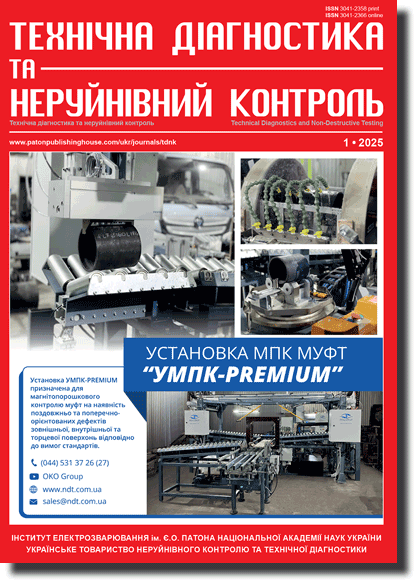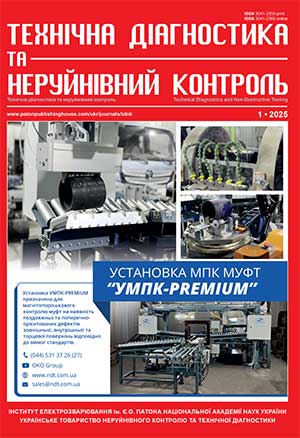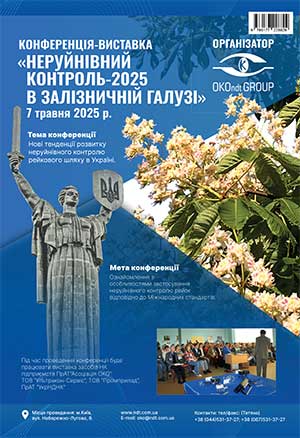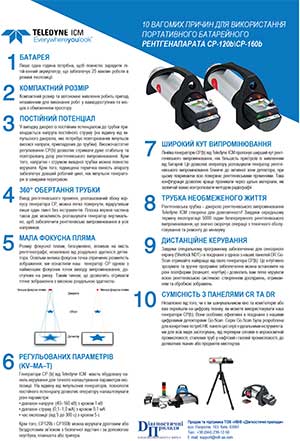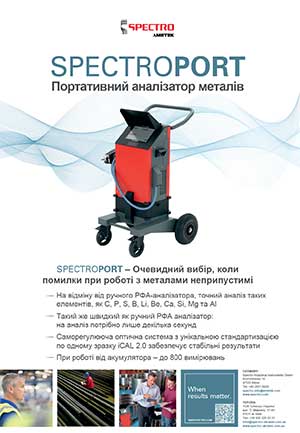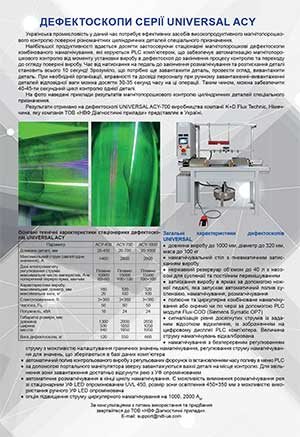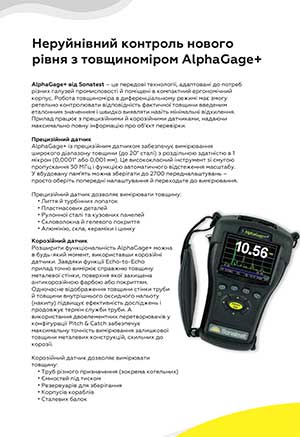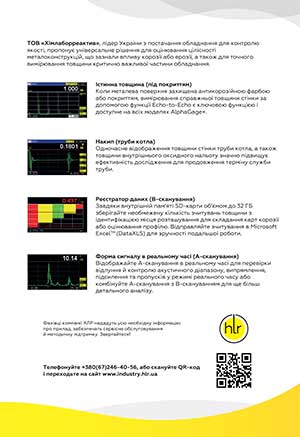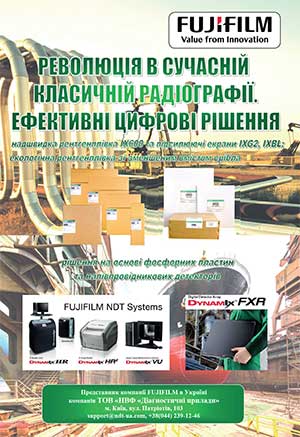Доступ для скачування ПДФ файлів журналів для підписників та рецензентів наукометричних баз.
Організація: Elsevier for content access(ПДФ файли журналів виданих раніше 2024 року відкриті для завантаження))
Організація: Elsevier for content access(ПДФ файли журналів виданих раніше 2024 року відкриті для завантаження))
| 2025 №01 (01) |
DOI of Article 10.37434/tdnk2025.01.02 |
2025 №01 (03) |
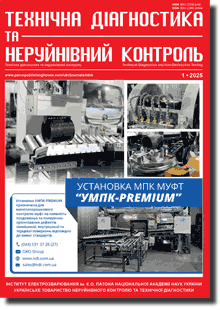
Технічна діагностика і неруйнівний контроль, 2025, №1, стор. 10-15
Оцінка мікроскопічних дефектів покриття лопаток гідротурбін
C.A. Tugui1, A. Savin2, V.M. Uchanin3
1Materials Processing Technologies and Equipment Department, Gheorghe Asachi Technical University, Iași, Romania. E-mail: tzugui.andrei@yahoo.com2Nondestructive Testing Department, National Institute of Research and Development for Technical Physics, Iasi, Romania. E-mail: asavin@phys-iasi.ro
3G.V. Karpenko Physico-Mechanical Institute of the NAS of Ukraine NASU. 5 Naukova str., 79060, Lviv, Ukraine. E-mail: vuchanin@gmail.com
Гідроабразивне зношування є основною проблемою ефективної та довговічної роботи турбін Френсіса, які широко використовуються на гідроелектростанціях завдяки їхній здатності перетворювати гідравлічну енергію в стабільну електроенергію. Постійно піддаючись впливу абразивних частинок у воді, компоненти турбіни зазнають інтенсивних навантажень, що призводить до прогресуючого псування та скорочення терміну їх служби. У цьому контексті аналіз за допомогою скануючої електронної мікроскопії (SEM) стає важливим інструментом для оцінки та розуміння мікроскопічних дефектів, викликаних гідроабразивним зносом. SEM дозволяє детально охарактеризувати уражені поверхні та ідентифікувати типи пошкоджень, таким чином забезпечуючи фундаментальні дані для оптимізації та вибору матеріалів, стійких до стирання. Терморозпилення матеріалів, таких як Metco 71VF-NS (WC12Co), є важливим рішенням у боротьбі зі зносом, відомим своєю підвищеною твердістю та міцністю. Ці напилені шари не тільки захищають турбіни від впливу гідроабразивного зносу, але й сприяють загальній ефективності системи, зменшуючи частоту ремонтів і технічного обслуговування. Таким чином, у контексті відновлюваної енергетики, де надійність і довговічність обладнання є важливими, використання передових матеріалів для захисту турбін Френсіса є вирішальним кроком до сталого та ефективного виробництва електроенергії на основі гідравлічних ресурсів. Бібліогр. 22, табл. 2, рис. 5.
Ключові слова: термічне напилення, покриття, скануюча електронна мікроскопія, структура, товщина, пористість
Отримано 27.11.2024
Отримано у переглянутому вигляді 21.02.2025
Прийнято 22.03.2025
Список літератури
1. Sangal, S., Singhal, M., Saini, R.P. (2018) Hydro-abrasive erosion in hydro turbines: A review. International J. of Green Energy, 15(1), 232–253. DOI: https://doi.org/10.1080/15435075.2018.14315462. Rai, A., Kumar, A., Staubli, T. (2018) Design and verification of a Pelton turbine rig for hydroabrasive erosion testing. In: Conference «Current Research in Hydraulic Turbines» (CRHT-VIII-2018), June 2018, Kathmandu, Nepal
3. Arora, N., Kumar, A., Singal, S. (2024) Hydroabrasive erosion in Kaplan turbines: A case study. J. of Hydroinformatics, 26(9), 2251–2260. DOI: https://doi.org/10.2166/hydro.2024.096
4. Felix, D., Albayrak, I., Boes, R., Abgottspon, A. (2017) Sediment transport through the power waterway and hydroabrasive erosion on turbines. In: Conference «Hydro 2017», October 2017, Seville, Spain. Volume: E-Proceedings, paper №27.07.
5. Pitkänen, J., Hakkarainen, T., Jeskanen, H., Kuusinen, P., Lahdenperä K., Särkiniemi P., Kemppainen, M., Pihkakoski M. (2000) NDT methods for revealing anomalies and defects in gas turbine blades. In: 15th World Conf. on Nondestructive Testing, Rome, 2000 www.ndt.net/article/wcndt00/papers.
6. Mook, G., Simonin, J., Feist, W.D., Hinken, J.H., Perrin, G. (2006) Detection and characterization of magnetic anomalies in gas turbine disks. In: Proceedings of the 9th European Conference on NDT, Berlin, Germany, 25–29 September 2006.
7. Uchanin, V., Nardoni, G., Nardoni, P. (2024) Fatigue cracks detection in the fillet zone of steel blades of industrial gas turbines using eddy current method. The Paton Welding J., 7, 22–28. DOI: https://doi.org/10.37434/tpwj2024.07.04
8. Schnell, A., Germerdonk, K., Antonelli, G. (2007) A nondestructive testing method of determining the depletion of a coating. U.S. Patent № 7175720, Publ. 13.02.2007.
9. Antonelli, G. (2002) Non-destructive condition assessment of serviced MCrAlY coatings. Turbine Forum 2002, Nice-France, 2002.
10. Antonelli, G., Ruzzier, M., Necci, F. (1998) Thickness measurement of MCrALY high-temperature coatings by frequency scanning eddy current technique. J. of Engineering for Gas Turbines and Power, Transactions of ASME, 120, 537–542.
11. Uchanin, V.M., Sidorenko, M.V. (2016) Investigation of eddy current method for detection and assessing changes in structure during grinding of heat-resistant steel components. Technical diagnostics and non-destructive testing, 4, 21–26. DOI: https://doi.org/10.15407/tdnk2016.04.04
12. Uchanin, V. (2000) Elevated frequencies in eddy currents – new possibilities of thin surface layer evaluation. In: 15th World Conf. on Nondestructive Testing, Rome, 2000 www.ndt.net/article/wcndt00/papers.
13. Uchanin, V.N. (1992) Eddy current device for inspecting changes in the structure in heat treatment of components of titanium alloys. Materials Science, 27, 442–443. DOI: https://doi.org/10.1007/BF00723242
14. İpek Ayvaz, S., Özer, E. (2023) Comparative study of conventional and microwave-assisted boriding of AISI 1040 and AISI 4140 steels. Tehnički Glasnik, 17(2), 286–292. DOI: https://doi.org/10.31803/tg-20221206210933
15. Hajian, M., Adivi, B., Jamali, M. (2024) Investigating the microstructure and wear properties of AISI 4140 steel clad with WC-Ti composite particles via gas tungsten arc welding. JOM, 76, 2824–2834. DOI: https://doi.org/10.1007/s11837-024-06471-z
16. Podgornik, B., Vizintin, J., Leskovšek, V. (1998) Tribological properties of plasma and pulse plasma nitrided AISI 4140 steel. Surface & Coatings Technology, 108-109, 454–460. DOI: https://doi.org/10.1016/S0257-8972(98)00571-4
17. Márquez-Cortés, R., Martínez-Trinidad, J., García-León, R. (2023) Adhesion behaviour of borided AISI 4140 steel. Surface Engineering, 38(10-11). DOI: https://doi.org/10.1080/02670844.2023.2180856
18. Godoy, C., Batista, J.C.A. (1999) Adhesion evaluation of plasma sprayed coatings using piecewise linear regression analysis. J. of Thermal Spray Technology, 8(4), 531–536. DOI: https://doi.org/10.1361/105996399770350214
19. Mann, B.S., Arya, V. (2001) Abrasive and erosive wear characteristics of plasma nitriding and HVOF coatings: Their application in hydro turbines. Wear, 249(5-6), 354–360. DOI: https://doi.org/10.1016/S0043-1648(01)00537-3
20. Qu, Q.-y., Qiu, W., Zeng, D.-c., Liu, Z., Dai, M.-j., Zhou, K.s. (2009) Effects of deposition parameters on microstructure and thermal conductivity of diamond films deposited by DC arc plasma jet chemical vapor deposition. Transactions of Nonferrous Metals Society of China, 19(1), 131–137. DOI: https://doi.org/10.1016/S1003-6326(08)60240-X
21. Sosnowy, P., Góral, M., Kotowski, S., Hanula, G., Gwizdała, J., Drzał, J., Kobylarz, M., Borowski, P., Gargała, R. (2015) The influence of temperature on erosion resistance of carbide coatings deposited by APS method. Solid State Phenomena, 227, 251–254. DOI: https://doi.org/10.4028/www.scientific.net/SSP.227.251
22. Kim, H. J., Kweon, Y. G., Chang, R. W. (1994). Wear and erosion behavior of plasma-sprayed WC-Co coatings. J. of Thermal Spray Technology, 3(2), 169–178. DOI: https://doi.org/10.1007/BF02648274
Реклама в цьому номері:
Щоб замовити електронну версію статті:
C.A. Tugui, A. Savin, V.M. UchaninОцінка мікроскопічних дефектів покриття лопаток гідротурбін
Технічна діагностика та неруйнівний контроль №01 2025 p.10-15
Вартість статті (pdf): 13 $, 12 €, 150 UAH (1 прим.)
заповніть форму:
Вартість передплати/замовлення на журнали або окремі статті
| журнал/валюта | річний комплект друкований |
1 прим. друкований |
1 прим. електронний |
одна стаття (pdf) |
| AS/UAH | 1800 грн. | 300 грн. | 300 грн. | 150 грн. |
| AS/USD | 192 $ | 32 $ | 26 $ | 13 $ |
| AS/EUR | 180 € | 30 € | 25 € | 12 € |
| TPWJ/UAH | 7200 грн. | 600 грн. | 600 грн. | 280 грн. |
| TPWJ/USD | 384 $ | 32 $ | 26 $ | 13 $ |
| TPWJ/EUR | 348 € | 29 € | 24 € | 12 € |
| SEM/UAH | 1200 грн. | 300 грн. | 300 грн. | 150 грн. |
| SEM/USD | 128 $ | 32 $ | 26 $ | 13 $ |
| SEM/EUR | 120 € | 30 € | 25 € | 12 € |
| TDNK/UAH | 1200 грн. | 300 грн. | 300 грн. | 150 грн. |
| TDNK/USD | 128 $ | 32 $ | 26 $ | 13 $ |
| TDNK/EUR | 120 € | 30 € | 25 € | 12 € |
AS = «Автоматичне зварювання» - 6 накладів на рік;
TPWJ = «PATON WELDING JOURNAL» - 12 накладів на рік;
SEM = «Сучасна електрометалургія» - 4 наклада на рік;
TDNK = «Технічна діагностика та неруйнівний контроль» - 4 наклада на рік.





